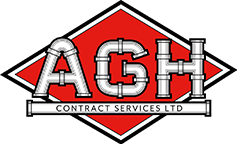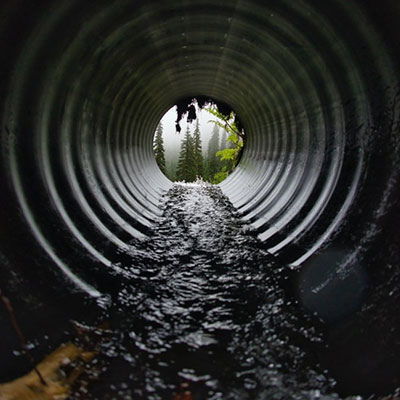The Lingo - be in the know.

a
Activated Sludge
wastewater containing sewage
b
Biochemical Oxygen Demand (BOD)
The amount of oxygen needed by the organisms to break down organic material.
Biodisc
A type of sewage treatment plant that uses a series of rotating discs for the organisams to live on.
Biomass
Biological material from living, or recently living organisms.
Biological Aerated Filter (BAF)
A type of sewage treatment plant that contains a submerged medium with a large surface area which is aerated.
Biological Filter (BF)
A circular tank that uses a pump to spread waste through the system
British Water
Represents the interests of the UK water and wastewater industry on UK and European regulations and legislation.
c
Cesspool
A watertight holding tank for sewage and effluent that is used where ground conditions prevent the use of a septic tank or sewage treatment plant.
Crust
Material which forms on top of the effluent and sludge in a tank that is removed when the system is desludged.
Consent to Discharge
Permission from the Environment Agency to discharge final, trade or industrial effluent, surface water or storm water to a receiving watercourse.
d
Duty of Care
Your legal responsibility to make sure any waste that you produce, store, transport or dispose of is done without harming the environment.
Desludging
Removing the crust, sludge and waste material using a specialist tanker.
e
Effluent
Waste water mixed with waste.
Environment Agency (EA)
Regulatory body for England and Wales.
f
Final Settlement Tank (Tertairy Tank)
A secondary settlement tank where the treated waste flows and settles.
Fat Oil and Grease (FOG)
By products of cooking from kitchens and food processing sites, the waste gets washed down the sink and can block pipes and drains when it cools.
g
Grease Trap
A device to separate grease, fat and oil from wastewater.
Ground Water
Groundwater lies below the ground in the saturation zone (below the water table).
h
Humus Tank
A settlement tank following the primary and secondary treatment tanks.
m
Mains Connection
A way of connecting a property to the mains sewer, using either gravity or a pump.
Mains Sewer
An underground system, which collects sewage and waste water and transports it to a sewage works for treatment.
Media
Material within a sewage treatment plant that the microbes live on.
p
Package Treatment Plant
Another name for a sewage treatment plant
Per Capita Volume and Loads
The volume in litres that a single domestic person uses per day with the organic and ammonia load expressed in grams.
Population Equivalent (PE)
The maximum number of people a premises can accommodate based on 60 gallons BOD per head per day. Used when sizing a sewage treatment plant.
Percolation Test
The test shows if the land around a septic tank or sewage treatment plant is absorbant enough for effluent to soak away.
Preactivated Dosing System (Grease Management)
Releases bacteria into drain runs to prevent the build up of FOGs in pipes.
Primary Settlement Tank
Where solid matter is allowed to settle by sedimentation.
Pumped to Mains
Connecting a properties sewerage system, straight to the mains sewer, using either gravity or a pump
r
Reedbed
Reeds planted over a gravel bed which offer a form of additional treatment for sewage.
Rotating Biological Contractor (RBC)
Used in sewage treatment plants, a series of slowly rotating parallel discs on a horizontal shaft. The discs rotate in and out of the settled effluent and the treatment takes place on the discs.
s
Sequencing Batch Reactor (SBR)
A treatment process that distributes oxygen through the waste to reduce the BOD.
Secondary Settlement Tank
Where treatment happens using naturally occurring micro-organisms.
Septic tank
A simple treatment tank with an outlet pipe which allows effluent to soak away.
Sewage Treatment Plant
A multistage tank using biological processes and pumps to treat sewage and effluent to a high standard for discharge to a watercourse.
SEPA (Scottish Environment Protection Agency)
Regulatory body for Scotland
Sludge
Sludge is the matter that is produced by all sewage systems and must be removed regularly.
Submerged Aerated Filter (SAF)
A submerged mechanical device distributes oxygen through the waste.
Sustainable Drainage Systems (SuDS)
Reducing the amount of sufrace runoff into drains by either diverting the volume or velocity of water entering in the first place, or divert the water for other purposes.
Surface Water
Rain water which falls onto roofs, drives, car parks, roads etc.
Soakaway
Allows treated effluent from a septic tank or sewage treatment plant to seep slowly into the ground usually in the form of perforated pipes laid out in a herringbone design.
Sewage
Is everything that gets put down drains from toilets, sinks, washing machines, dishwashers and showers etc
Storm Water
Run off water from roofs, car parks, highways etc
Sewerage
Describes the system or network, e.g. sewage runs in a sewerage system
w
Watercourse
Is a moving body of water such as a stream or river.
Water Table
The underground depth at which point the ground is totally saturated with water
Waste Carrier / License
Any business operating a waste carrying business is required by law to have a waste carrier's licence from the Environment Agency.
Waste Transfer Note
A waste transfer note is a legal document that details the transfer of waste from one person to another. They must be kept for a minimum of two years after a job date





